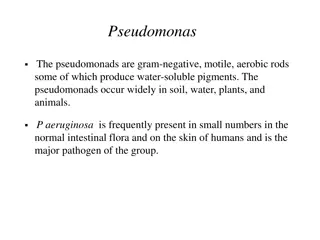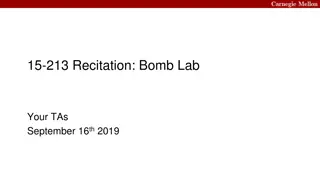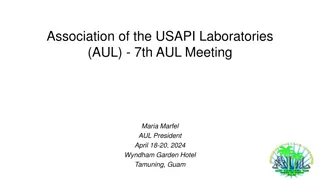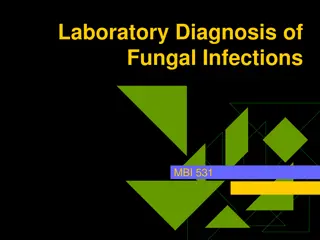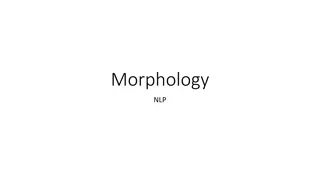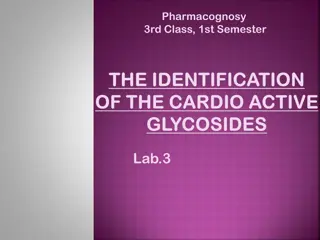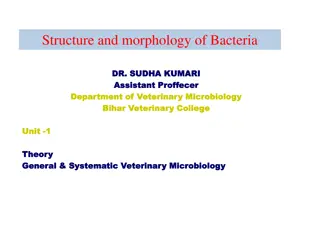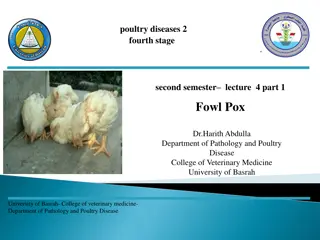Overview of Pseudomonas aeruginosa: Morphology, Identification, and Lab Diagnosis
Pseudomonas aeruginosa is a gram-negative, motile bacterium commonly found in soil, water, plants, and animals. It is a major pathogen known for causing infections in individuals with weakened immune systems. This article delves into the morphology, identification techniques, and lab diagnosis methods for P. aeruginosa, highlighting its unique characteristics and growth preferences.
Download Presentation

Please find below an Image/Link to download the presentation.
The content on the website is provided AS IS for your information and personal use only. It may not be sold, licensed, or shared on other websites without obtaining consent from the author. Download presentation by click this link. If you encounter any issues during the download, it is possible that the publisher has removed the file from their server.
E N D
Presentation Transcript
Pseudomonas Prepared by Prepared by Reham M.M. AL Medical Microbiology Medical Microbiology Assistant Professor Assistant Professor Reham M.M. AL- -Mosawi Mosawi
Pseudomonas The pseudomonads are gram-negative, motile, aerobic rods some of which produce water-soluble pigments. The pseudomonads occur widely in soil, water, plants, and animals. P aeruginosa is frequently present in small numbers in the normal intestinal flora and on the skin of humans and is the major pathogen of the group.
Pseudomonas aeruginosa P aeruginosa is widely distributed in nature and is commonly present in moist environments in hospitals. It can colonize normal humans, in whom it is a saprophyte. It causes disease in humans with abnormal host defenses.
Morphology & Identification A. P aeruginosa is motile and rod shaped, measuring about 0.6 2 m. It is gram negative and occurs as single bacteria, in pairs, and occasionally in short chains. B. Culture: *It is an obligate aerobe *sometimes producing a sweet or grapelike or corn taco like odor. *Some strains hemolyze blood. *P aeruginosa forms smooth round colonies with a fluorescent greenish color: bluish pigment pyocyanin, which diffuses into the agar. pyoverdin, which gives a greenish color to the agar. Some strains produce the dark red pigment pyorubin or the black pigment pyomelanin.
P aeruginosa grows well at 3742C; its growth at 42C helps differentiate it from other Pseudomonas species in the fluorescent group. *It is oxidase positive. * It does not ferment carbohydrates, but many strains oxidize glucose. Identification: is usually based on *colonial morphology, *oxidase positivity, *the presence of characteristic pigments, *and growth at 42 C. P aeruginosa and other pseudomonads are resistant to many antimicrobial agents and therefore become dominant and important when more susceptible bacteria of the normal microbiota are suppressed.
Lab diagnosis A. Specimens: Specimens from skin lesions, pus, urine, blood, spinal fluid, sputum, and other material should be obtained as indicated by the type of infection. B. Smears Gram-negative rods are often seen in smears. No specific morphologic characteristics differentiate pseudomonads in specimens from enteric or other gram-negative rods. C. Culture Specimens are plated on blood agar and the differential media commonly used to grow the enteric gram-negative rods. Pseudomonads grow readily on most of these media, but they may grow more slowly than the enterics. P aeruginosa does not ferment lactose and is easily differentiated from the lactose-fermenting bacteria. Culture is the specific test for diagnosis of P aeruginosa infection.


